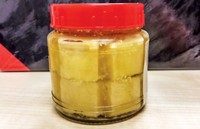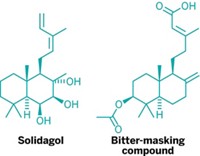Advertisement
Grab your lab coat. Let's get started
Welcome!
Welcome!
Create an account below to get 6 C&EN articles per month, receive newsletters and more - all free.
It seems this is your first time logging in online. Please enter the following information to continue.
As an ACS member you automatically get access to this site. All we need is few more details to create your reading experience.
Not you? Sign in with a different account.
Not you? Sign in with a different account.
ERROR 1
ERROR 1
ERROR 2
ERROR 2
ERROR 2
ERROR 2
ERROR 2
Password and Confirm password must match.
If you have an ACS member number, please enter it here so we can link this account to your membership. (optional)
ERROR 2
ACS values your privacy. By submitting your information, you are gaining access to C&EN and subscribing to our weekly newsletter. We use the information you provide to make your reading experience better, and we will never sell your data to third party members.
Business
Musty Wine Taint Uncorked
'Corked wine' compound may work by blocking cell signaling behind the sense of smell
by Carmen Drahl
September 23, 2013
| A version of this story appeared in
Volume 91, Issue 38
The compound known for causing cork taint that generates off-flavors in wines doesn’t work quite the way scientists thought, researchers have found. 2,4,6-Trichloroanisole (TCA) has long been the bane of vintners’ existence—it is generated by mold growing in contaminated corks and leads to a musty smell and taste. Researchers would expect a stinky substance such as TCA to activate specific types of olfactory cells. To the surprise of researchers in Japan, however, TCA suppresses cell signaling instead, even at attomolar concentrations (Proc. Natl. Acad. Sci. USA 2013, DOI: 10.1073/pnas.1300764110). Hiroko Takeuchi and Takashi Kurahashi of Osaka University investigated the phenomenon with Hiroyuki Kato of Daiwa Can Co., a manufacturer of packaging products used by companies such as Sapporo Breweries and Starbucks. TCA blocks a specific type of protein ion channel, they find. The team detected TCA in many foods and beverages, including peanuts, chicken, and sake. They suggest that the compound might lead to spoilage of these and other food and drink as well. They are not yet sure how TCA’s newfound smell-suppression mechanism leads to the perception of mustiness.




Join the conversation
Contact the reporter
Submit a Letter to the Editor for publication
Engage with us on Twitter